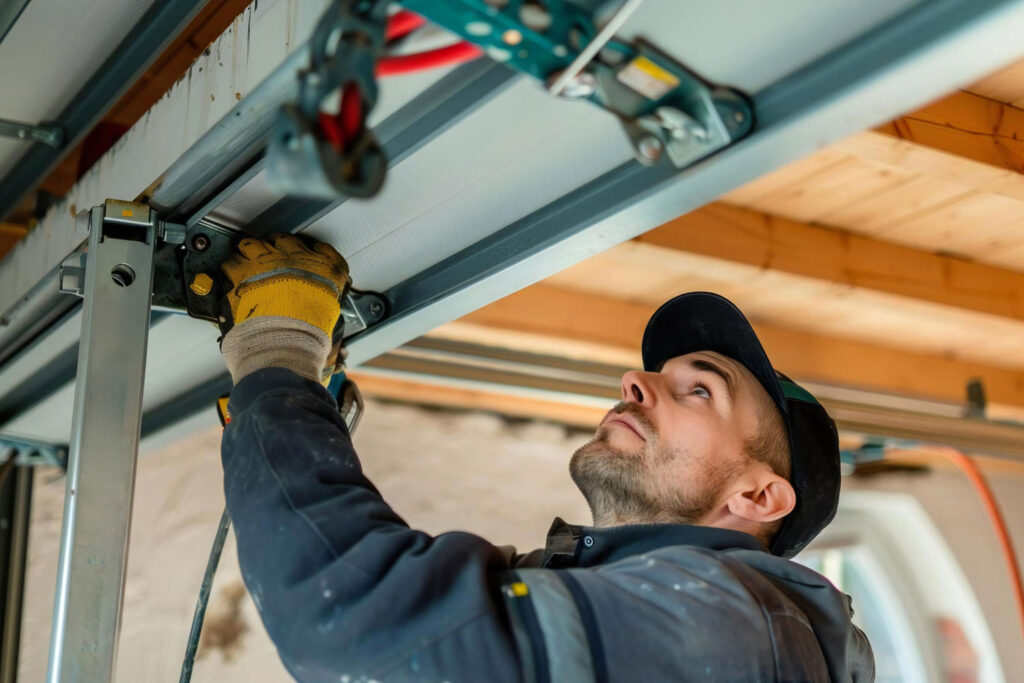Usual Garage Door Issues and Just How to Deal with Them
Garage doors are essential for both protection and benefit, yet they usually offer a range of usual problems that can annoy home owners. Issues such as extreme sound during procedure, doors that fall short to open up or shut, misaligned tracks, and malfunctioning remotes can develop without caution. While some concerns may appear simple to fix, others may require an extra nuanced understanding of garage door mechanics. Dealing with these problems successfully not only enhances functionality but also prolongs the life of the door. One may question what actions are needed to take on these difficulties efficiently.
Noisy Garage Door Operation
A noisy garage door procedure can be a considerable source of inconvenience for property owners, commonly suggesting underlying mechanical issues. Such interruptions might stem from different reasons, including worn-out rollers, loose equipment, or insufficient lubrication. Determining the resource of the sound is essential for efficient resolution.
Over time, these elements can deteriorate, leading to grinding or squealing audios as the door steps. In addition, loose bolts or screws in the door mechanism can create rattling noises throughout procedure.
An additional contributing element is insufficient lubrication of the door's relocating parts. Applying a top notch lubricant to the tracks, springtimes, and rollers can substantially lessen rubbing and noise. House owners must execute this maintenance occasionally to preserve optimum performance.
Lastly, the garage door opener may likewise generate sound as a result of its age or mechanical concerns. If the sound lingers regardless of dealing with other aspects, consulting a specialist for a complete evaluation and prospective fixing may be essential.
Door Will Not Open Up or Shut
Experiencing a garage door that won't open or close can be incredibly irritating and frequently signifies a malfunction within the system. Several elements can contribute to this issue, and determining the source is crucial for reliable resolution.

Following, inspect the safety sensors situated at the base of the door. These sensors can become misaligned or obstructed by particles, stopping the door from running correctly. Tidy the sensing units with a soft towel and ensure they are straightened.
In addition, the garage door's internal elements ought to be evaluated. Concerns such as a damaged spring, worn-out rollers, or a damaged opener can hinder movement. If any elements seem harmed, it may be advisable to seek advice from a professional for repair work.
Misaligned Tracks
To identify imbalance, visually inspect the tracks for gaps or uneven spacing. If you discover any type of discrepancies, it is critical to resolve the problem promptly - garage door service. Begin by loosening the screws that safeguard the track to the wall, permitting changes. Meticulously tap the track back into its proper placement using a rubber mallet or a similar device, guaranteeing it is straight and degree.
Regular maintenance, consisting of cleaning up the tracks and making sure rollers are in good problem, can avoid future imbalances. By addressing misaligned tracks immediately, you can bring back the performance of your garage door and improve its durability.
Broken Springs
Among the various components of a garage door system, broken springs are among one of the most usual problems that can substantially restrain its performance. Garage door springtimes are vital for balancing the weight of the door, enabling for smooth opening and closing. When a springtime breaks, it can result in a door that is challenging to operate or, sometimes, entirely unusable.
There are 2 main types of springs: torsion springs, which are placed over the door, and expansion springs, located on either side. Signs of a busted springtime include a door that won't open up, a noticeable space in the springtime, or a loud sound during procedure. Trying to run a garage door with a broken spring can trigger additional damages to the door or the opener.
Repairing damaged springs is not a do it yourself project; it needs specialized devices and know-how as a result of the high tension included. It is recommended to get in touch with an expert specialist who can safely change the springs and guarantee the door is appropriately balanced. Routine upkeep and evaluations can aid protect against springtime failures and prolong the lifespan of the garage door system.
Remote Control Issues

The first step is to check the batteries in the push-button control. Change them if they are weak or dead. If the remote still stops working to operate, examine the garage door opener to ensure that its sensing units are tidy and unhampered. Dirt, particles, or misalignment may prevent the signal transmission between the remote and the opener.
Disturbance from various other electronic devices can also hamper remote functionality. Make sure that neighboring devices, such as cordless routers or cordless phones, are not triggering disturbances. garage door service. If disturbance is thought, try relocating these devices additionally far from the garage door opener
In many cases, the remote may require to be reprogrammed. Get in touch with the supplier's standards to reset the remote control and integrate it with the garage door opener. If all else falls short and the remote remains to malfunction, think about consulting an expert technician for a thorough assessment and prospective substitute of the remote or opener.
Conclusion
Comments on “Trustworthy Garage Door Service for Adjustments and Inspections”